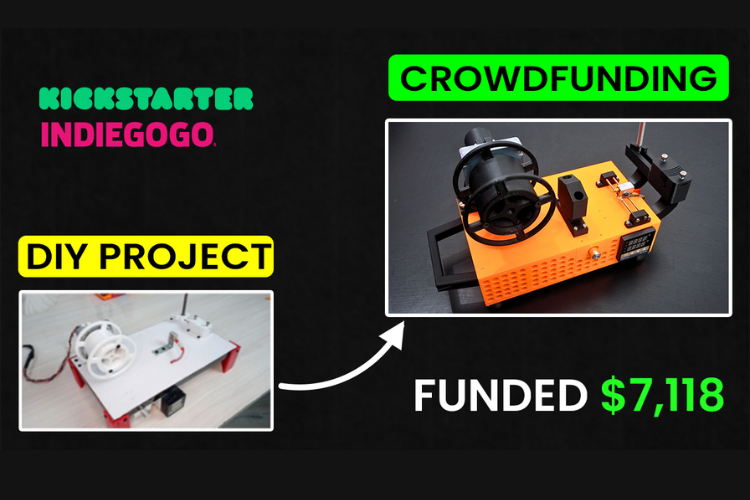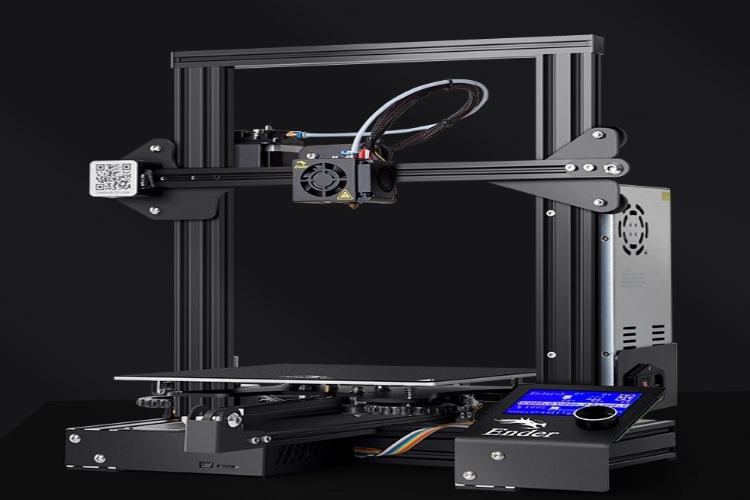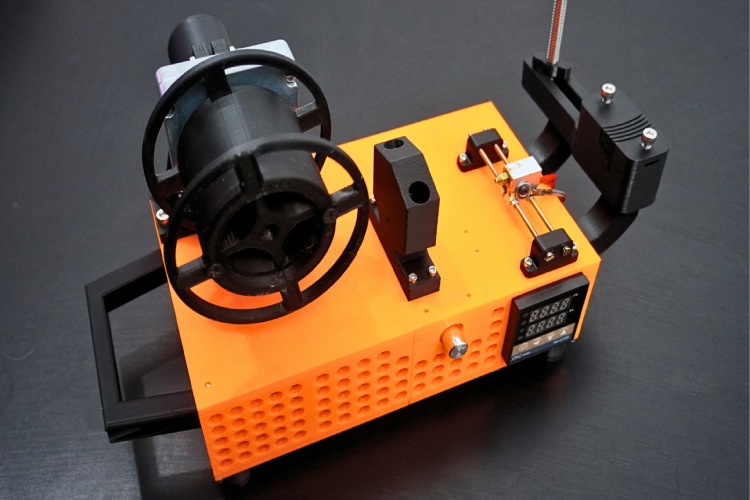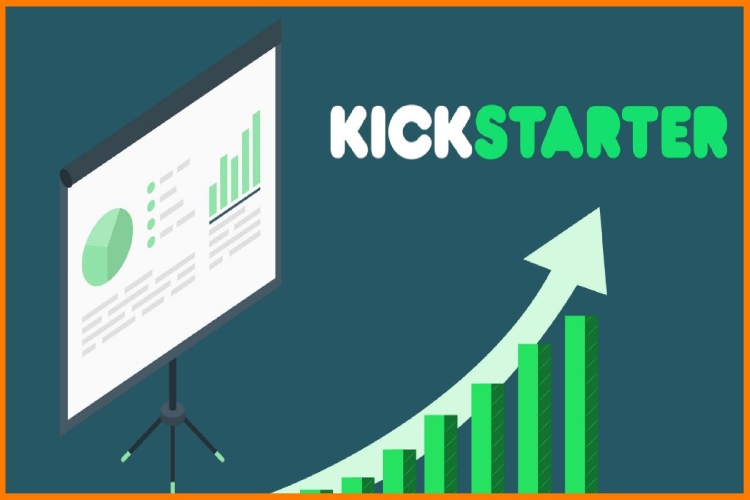
Ever dreamt of turning your DIY project into a market-ready product? Crowdfunding can be the key to transforming your innovative ideas into reality. In our latest interview, we delve into the world of crowdfunding, exploring how aspiring creators can successfully launch their projects and attract the support they need. Join us as we sit down with Priyank Pal, a youtuber and 3D printing hobbyist, who shared invaluable insights on crafting compelling campaigns, setting realistic goals, and building a community around your product. He successfully launched a Kickstarter campaign for his project PETFusion, and have raised around 6 lakh Rupees.
Whether you're a seasoned maker or just starting out, article will provide you with practical tips and strategies to take your DIY project from concept to crowdfunding success.
Q. Let's start with something about yourself, where are you from and what do you do?
I'm from Lucknow and currently pursuing a Bachelor of Business Administration with a specialization in International Business. I design and create 3D models, despite not having an engineering background, only driven by my passion for electronics and 3D design. I create Fusion 360 and 3D modelling tutorials, share tips and tricks about 3D printing on Instagram, and occasionally post videos of my projects on YouTube.
Q. How did you get into 3D printing?
In 2020, I had a gaming YouTube channel with 130k subscribers, earning around 1.5 lakhs in just 6 to 7 months. Eventually, I decided to move on, deleted the channel, and used the earnings to start building my own 3D printer from scratch, despite having zero experience. Although I made some initial mistakes, I successfully built a 1:1:1 3D printer. Initially, I was more interested in construction 3D printing than plastic 3D printing, but after spending around 80k to 90k on it, I realized it would take 12 to 15 lakhs to make it viable, leading to a change in direction.
In 2021, I bought an Ender-3 3D printer and started printing models downloaded from websites like Thingiverse. Soon, I realized the need to design my own models, so I learned 3D design and became skilled in creating mechanical models. A few years later, I upgraded to a Bambu 3D printer, which I found very fascinating. What initially drew me to 3D printing was the idea of creating something from just a thin wire.

Q. What gave you the idea of starting a crowdfunding campaign, how did you get about with planning it?
I realized that I needed to monetize my skills as a BBA student, especially since my DIY videos on YouTube weren’t generating much revenue due to a small audience. I designed and made my first project, the first version of Petfusion, which wasn’t an entirely new concept. I made it more compact and 3D printable with fewer components but that didn’t bring in sufficient income through selling. So I turned to crowdfunding. I discovered that no projects on Kickstarter focused on recycling 3D-printed filament, so I launched my own project called Pet Fusion. Kickstarter proved to be the ideal platform with its broad audience.

Q. Tell us about the whole process of your campaign on Kickstarter for our audience.
First, I registered my company in the US, which cost around USD 500 to USD 600,. Then I opened a bank account on Mercury, which was free thanks to their digital account creation service. I used ChatGPT to generate descriptions and procedures for my campaign and recorded a mandatory video, crucial for avoiding project rejection. It’s important to note that Kickstarter requires all components to be self-designed, with no reselling allowed.
For marketing, I created a 7-day pre-launch page where people could follow my project and receive notifications when it launched. I promoted this on Instagram and through direct messaging, which helped me gain 150 initial followers before launching the campaign. Kickstarter also promoted my project. A key piece of advice is to set a low campaign fund goal, maybe around 1000 dollars, to make the project more attractive to backers, as it is easy to reach the goal.
For my post-launch campaign, I ran a Facebook ad that cost 25,000 INR. It’s important to get a custom URL before placing the ad, as this allows you to receive notifications about sales generated from the ads. I also promoted my project on Reddit to gain more traction. Make sure to keep on promoting the project.
Q. How do we register a company in the US and set up a non-resident American bank account for launching a Kickstarter campaign? Can you elaborate.
Register a company in Delaware, US. I recommend using Stripe Atlas, which simplifies the registration process for USD 500, though you can reduce it to USD 400 with a promo code from promoters. Once your company is registered through Stripe Atlas, you’ll receive all the necessary documents to start your Kickstarter campaign. For a bank account, Kickstarter suggests using Mercury. When I logged into Mercury, I found out that a passport was required, which led me to apply for one - a challenging process for me. Once you have your passport, take a photo, upload it, and receive your ID.
Now that you have your non-resident American bank account and a registered company in the US, go to Kickstarter and check the payment status. You’ll be directed to Atlas Stripe, Kickstarter’s financial partner. Here, you’ll need to verify your details by adding your name, company name, EIN (Employer Identification Number), and personal information. Don’t forget to upload the front and back of your passport in the identity section. Additionally, make sure to register your company with FIncer, a treasury agency in the US.
Q. Can you please explain the financial intricacies behind crowdfunding on Kickstarter?
Once you’ve raised enough money on Kickstarter, it typically takes about 14 days to get the funds into your account. During the first seven days, Kickstarter collects the pledged amounts from backers. Keep in mind that you won't receive the entire raised amount, as some backers' payments may fail to process due to issues like payment failures. From the total raised, Kickstarter deducts 5% as a platform fee, 3% as a payment processing fee, and an additional 30 cents (about 0.3%) per pledge. The remaining funds are then transferred to your American bank account. Be aware of tax liabilities, as it’s mandatory to pay taxes on any amount that you raised in America and converted into your Indian bank account. It is better to use your American bank account for transactions.

Q. What is your advice or two cents for first timers getting into crowdfunding? Especially for campaigns related to DIY Electronics.
First and foremost, your product should address a specific problem or need. Identifying and solving a real issue will make your product more valuable and appealing to your target audience. For the marketing aspect, consider offering environmentally friendly products and clearly labelling them as such. Consumers are increasingly conscious of sustainability, and highlighting eco-friendly features can significantly boost your product’s appeal. Next, focus on making your project more standardized, compact, and sophisticated. A well-designed product that is both functional and aesthetically pleasing will stand out in the market. Ensure that the design is attractive and professional, as the visual appeal can be a crucial factor in the purchasing decision.
Q. What is your plan moving forward? Are you working on anything new?
I'm currently working on a new project of my design: a filament dryer. It's designed to dry filament, particularly nylon, which tends to absorb moisture. My goal is to make it both efficient and visually appealing.

